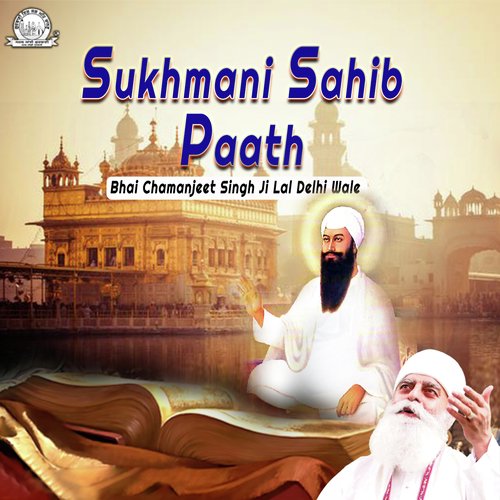

It is humanity's declaration of independence from soothsayers, yogis, priests, traditions etc whose validity had never been questioned.

The Japji, and in particular the Mool Mantar, is a compilation which has freed humanity from thousands of years of superstition that had gripped their psyche of many common people. In a word it simply defines Sikhism, the religious view of Guru Nanak." Miracle of Japji It simply describes the nature of Ultimate Reality and the way to comprehend it, and is not tied to any particular religious system. "The message of the “Japu” is abiding in nature and universal in application. It serves as a prologue to the Scripture and encapsulates Guru Nanak's creed and philosophy, as a whole." The entire composition including the Mool Mantar, two saloks and the thirty eight pauris form the sacred morning prayer Japji Sahib or “Japu Nisanu”.

The initial Salok too appears again in the Scripture as a preamble to the 17th Astapadi of Guru Arjan's famous composition Sukhmani, the Psalm of Peace. "Preceded by what is called Mool Mantar, the basic statement of creed, the Japu comprises an introductory sloka and 38 stanzas traditionally called pauree (steps) and a concluding Salok attributed by some to Guru Angad. "Japji is universally accepted to be the composition of Guru Nanak, the founding prophet of Sikhism, although, unlike other scriptural hymns and compositions, it remains anonymous without being credited individually to any of the Gurus." The composition is not assigned to any particular raga or musical measure, as is the rest of the Scriptural text. Japji is the most riveting Sikh Prayer recited by the devout early in the morning. The description of Japji Sahib that follows is taken from "The Encyclopedia of Sikhism" by Harbans Singh (published in 1996 by the Punjabi University, Patiala): All Nitnem Gutkas start with Japji Sahib and contain other Banis (hymns) as well. The collections of hymns of Sikh daily prayer are often compiled separately in a small book form called Gutkas or "Nitnem" (meaning daily prayer) Gutkas. This Bani (composition) encompasses the spirit and theme of whole of the Sri Guru Granth Sahib. The SGGS is treated as a living Guru and the respect shown for its Commandments is unique. The Ten Gurus of Sikhism were responsible for the creation of this faith which took place over period 1469 to 1708 - a period of about 239 years.Īt the point when the last of the Human Gurus departed this Earth, the Guruship was passed to the Holy Book, the Sri Guru Granth Sahib (SGGS). This Bani was composed by the founder of the faith, Sri Guru Nanak Dev Ji who was the first of ten human Gurus of this faith. ‘Ji’ is a word that is used to show respect as is the word ‘Sahib’. The word ‘Jap’ means to ‘recite’/‘to ‘chant’/'to stay focused onto'. It, the most important Bani or 'set of verses', and is lovingly recited by all Sikhs every morning. This Bani called Japji Sahib, appears at the very beginning of the Guru Granth Sahib from to in the Holy Book of the Sikhs Nay! of Humanity. The compilation consists of the Mool Mantar, an opening Salok or verse, a set of 38 Pauris or hymns and a final closing Salok. It is a famous and concise summary of Sikh philosophy which was compiled by the founder of Sikhism and the first spiritual guide of the Sikhs known worldwide as Guru Nanak. Japji Sahib is the first sacred composition found in the main Sikh holy scripture called the Guru Granth Sahib. An exquisitely illuminated page, showing the Mool MantarĪnd the beginning of the Japji Sahib Bani


 0 kommentar(er)
0 kommentar(er)
